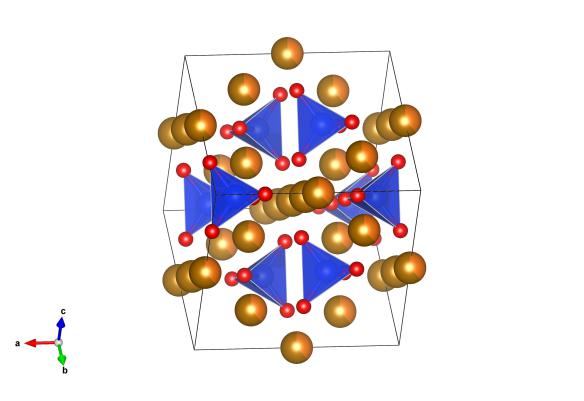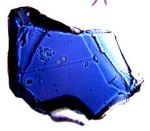What is our planet made out of? (4) Ringwoodite
What does it look like?

Image generated by the VESTA (Visualisation for Electronic and Structural analysis) software http://jp-minerals.org/vesta/en/
What is it?

Blue ringwoodite crystal picture by Jasperox.
Deeper into the Earth's interior, and with the pressure building, at 525 km another big change in the crystal structures of the minerals there occurs. Wadsleyite transforms to ringwoodite, which has a structure known as a ‘spinel structure'. We've met the spinel structure before but in a very different context - lithium titanate, a potential long lasting battery material. Ringwoodite is named in honour of Ted Ringwood, an Australian experimental geophysicst who predicted the phase transitions in olivine that we've been describing.
Where did the structure come from?
Like the wadsleyite structure, this crystal structure of ringwoodite has come from an in situ high-pressure study, and is #9001574 in the Crystallographic Open Database.






